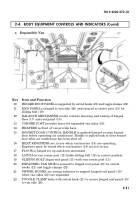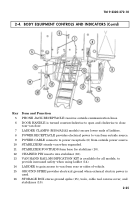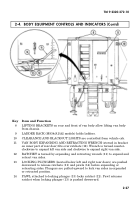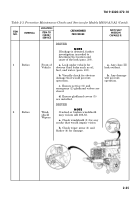TM-9-2320-272-10 - Page 128 of 481
TM 9-2320-272-10
2-29
a.
Your PMCS, table 2-3, lists inspections and care required to keep your vehicle in
good operating condition. It is set up so you can make your BEFORE (B) OPERATION
checks as you walk around the vehicle.
b.
The Item Number column of table 2-3 lists procedures in consecutive numerical
order. The TM Number column on DA Form 2404, Equipment Inspection and
Maintenance Worksheet, refers to these item numbers when recording PMCS results.
c.
The INTERVAL column of table 2-3 tells you when to do a certain check or service.
d.
The PROCEDURE column of table 2-3 tells you how to do required checks and
services. Carefully follow these instructions. If you do not have tools, or if the procedure
tells you to, notify unit maintenance.
e.
The Not Fully Mission Capable If column of table 2-3 tells you why vehicle is not
able to perform the described mission, and what equipment will be reported as not ready
or unavailable. Refer to DA PAM 738-750.
f.
If the truck does not perform as required, refer to Table 3-1, Troubleshooting
Procedures.
g.
If anything looks wrong and you can’t fix it, write it on your DA Form 2404.
IMMEDIATELY report it to unit maintenance.
WARNING
Drycleaning solvent is flammable and will not be used near an
open flame. A fire extinguisher will be kept nearby when solvent
is used. Use only in well-ventilated places. Failure to do this will
result in injury to personnel and/or damage to equipment.
NOTE
Dirt, grease, oil, and debris may cover up a serious problem. Clean
as you check. Use drycleaning solvent on all metal surfaces. Use
soap and water on rubber or plastic material.
h.
When you do your PMCS, you will always need a rag or two. Following are checks
that are common to the entire vehicle.
(1)
Check all bolts, nuts, and screws. If loose, bent, broken, or missing, either
tighten or report condition(s) to unit maintenance.
(2)
Look for loose or chipped paint and rust or gaps at welds. If a cracked or bro-
ken weld is found, report condition(s) to unit maintenance.
(3)
Check electrical wires and connectors for cracked or broken insulation. Look
for bare wires and loose or broken connections. Tighten loose connections. Report other
problem(s) to unit maintenance.
(4)
Check hoses and fluid lines for wear, damage, and leaks. Ensure clamps and
fittings are tight. (Refer to para. 2-9 for information on leaks.)
(5)
Check air lines for damage or leaks. Ensure clamps and fittings are
tight. Tighten loose connections. If leaks or other problems still exist, report condi-
tion to unit maintenance.
2-7. PMCS PROCEDURES
Back to Top




















